Although Modular Robotics doesn’t offer grant programs directly, we’ve collected a variety of resources and a list of open grant funding opportunities to help you secure funding for your work with Cubelets.
Below is a summary of federal, state, and local funding sources Cubelets may be eligible for, including sources aimed at technology, curriculum, PD, STEM/STEAM, before and after school programs, high-need students, and career and technical education.
Need help finding information about funding in your state or district? Get in touch at support@modrobotics.com.
The American Rescue Plan (ARP) included over $120 billion for K-12 education in The Elementary and Secondary School Emergency Relief (ESSER) Fund.
90% of the ESSER funds must be allocated by State Education Agencies (SEAs) to Local Education Agencies (LEAs) according to Title I allocations. States were asked to submit their plans by June 7, 2021. Allocations of funds by SEAs and LEAs must meet the following 2 requirements:
20% of money is designated to address “learning loss”. LEAs will likely use a greater proportion for programs targeting unfinished learning. School districts have broad discretion over how they spend the funds .
The ESSER II deadline is September 30, 2023 and ESSER III deadline is September 30, 2024.
Cubelets are a one-time purchase that can be used for years in a variety of classroom settings. Cubelets Educator Packs do not require consumables; and a generous one-year warranty helps ensure that students can continue using Cubelets for years to come.
ESSER II (Sept 30, 2023)
Any activities authorized under the Elementary and Secondary Education Act, IDEA, Carl D. Perkins Career and Technical Education Act, and Adult Education and Family Literacy Act. ARP Act Section 2001(e)(2)(A) through Section 2001(e)(2)(D).
Purchasing educational technology, which could include hardware, software, and connectivity, for students served by the LEA that aids in regular, substantive educational interaction between students and educators, including low-income students and students with disabilities. This could also include assistive technology or adaptive equipment. ARP Act Section 2001(e)(2)(K).
Planning and implementing summer learning and supplemental afterschool program activities, including providing classroom instruction or online learning during the summer months and addressing the needs of low-income students, students with disabilities, English learners, migrant students, students experiencing homelessness, and children in foster care. ARP Act Section 2001(e)(2)(M). Addressing learning loss among all students in all subgroups, including by:
Examples of Cubelets in Action
Governor Moorhead School, NC – Cubelets for Low-Vision and Blind Students
Northside Independent School District, TX – Cubelets for After-School Programs
Pinellas School District, FL – Cubelets Reach 100% Student Engagement
Recommended Products and Services
Cubelets Education Packs & age-appropriate Lesson Plan Bundle.
Cubelets Camp Curriculum [FREE] can be tailored for summer learning or after-school care.
Interdisciplinary lessons [FREE] in the Grab Bag support every subject.
21st Century Community Learning Centers
Also known as 21st CCLC, this is the only Federal funding source dedicated to afterschool programs. Funds are distributed to each state based on its Title 1 funding award to low-income students, and funds can be used toward academic enrichment materials and activities, including those for STEM programs. Application due dates: Varies depending on your home state.
The Advancing Informal STEM Learning (AISL) Program is committed to funding research and practice, with continued focus on investigating a range of informal STEM learning (ISL) experiences and environments that make lifelong learning a reality.
Other ideas:
ESEA (Title I, Part A): Funding for disadvantaged students and classrooms.
OESE (Title V, Part A): State-administered formula grant program designed to improve student academic achievement and the quality of education for all students.
ESSA (Title IV, Part B): Funding for 21st-century community learning centers.
IDEA: Funding for students with autism and language disabilities.
Carl D. Perkins Funds: Funding for career and technical education (secondary and post-secondary).
EIR Grants: Funding for high-need students.
National Science Foundation AISL: Funding for informal STEM Learning programs
Enhancing Education through Technology State Programs: Designed to improve student achievement through the use of technology, the “Ed-Tech Program” also has the goal of improving tech literacy among students by eighth grade. Application due date: Varies depending on your home state.
McCarthey Dressman Foundation Academic Enrichment Grants
Applications accepted between January and April from preK-12 grade educators for $10,000 – $20,000; specifically targeting programs that support students from low-income households.
Toshiba America Foundation
Toshiba’s foundation is designed specifically to help teachers fund project-based learning in math and science. Its grants are available to both public and private schools, and it welcomes applications from teachers in all grades K-12.
Westinghouse Charitable Giving Program
Education with a focus on STEM is one of Westinghouse’s three strategic grant-giving areas (the others are environmental sustainability and community safety and vitality). Westinghouse’s education grants aim to improve STEM literacy among students and teachers from K-12 and through college, and the general public. Applicants must be within 50 miles of a Westinghouse site or customer site. Application due dates: Applications accepted on a rolling basis.
The NEA Foundation
Through its membership dues and the contributions of corporate sponsors and other foundations, the NEA (National Education Association) Foundation has provided more than $7.1 million to fund 4,500 grants to public school educators. The foundation also supports innovation projects in schools that are designed to prepare students for college, careers, and adult life. To support STEM learning, the NEA works to bring high-quality, project-based, STEM instruction to high-need districts. Application due dates: February 1, September 15
WozEd
Cubelets and GoPiGo are featured in the WozEd Robotics Pathway. Apply for a WozEd Grant funded by the founder of Apple. Over $20M of funds are available to schools seeking to increase STEAM opportunities for students. Applications are accepted on a rolling basis.
Here is some helpful information and sample text to use when writing a proposal.
Modular Robotics started as a spin-off from Carnegie Mellon University, where founder Eric Schweikardt designed Cubelets while working on a PhD. After years of research and development, Cubelets robot blocks were released to the public in 2010. Early funding came from National Science Foundation grants and venture capital from the Foundry Group. This began our work of trying to make the world a better place with thousands and thousands of tiny robots.
Production of Cubelets started inside a small house in Boulder, Colorado, where circuit boards were hand-assembled with tweezers and hot plates. In late 2013, Modular Robotics launched the MOSS robot construction system on Kickstarter. The campaign reached its $100k goal in 12 hours and went on to raise more than three times the original goal. More than 10 years after being introduced to the public, Cubelets robot blocks continue to inspire and engage children, students, and museum visitors all over the world.
In 2019, Modular Robotics began the next chapter in its history by acquiring Dexter Industries, another educational robotics company. In addition to Cubelets, Modular Robotics now makes the GoPiGo and BrickPi Raspberry Pi robots, leveraging and extending a popular computing platform into the field of robotics.
To date, work continues supporting a family of robotics brands and developing new experiences that will continue what is becoming a decades-long tradition of building tools that help educate and inspire people all over the world.
Cubelets robot blocks are a unique blend of hardware and software; they’re like building blocks, but smarter! Builders as young as four will have fun switching and swapping the magnetic blocks to design new robot constructions that can move, light up, and more. Whether it’s through self-directed inquiry or through educator-led lessons, Cubelets make it easier than ever to explore STEM, coding, computational thinking, and other big ideas.
Cubelets are a unique piece of educational technology specifically suited to developing critical thinking and computational thinking skills. You don’t need to just believe us: here are a few independent academic research papers that have tested Cubelets over the years.
“I seek to create an afterschool program that supplements the normal school day with STEAM programming. Using Northside Independent School District as an example, I will purchase one Classroom Set of Cubelets and Lesson Plan Bundle for each after school program site.
Cubelets are an open-ended robot building system that gives students screen-free opportunities to build intuitions about complex systems, computer science, and robotics. By using Cubelets afterschool, students will practice computational thinking and build interdisciplinary skills that will support them in all subjects. Additionally, Cubelets are accessible to all learners regardless of adaptation requirements and language-needs. This means all students will have equitable access to this tool and curriculum.
Additionally, the Cubelets Lesson Plan Bundle includes both teacher-guided lessons and Activity Cards for stations or independent student time. That flexibility is essential for afterschool programs because these programs are designed to be complementary to the structured school days.”
Cubelets Resources to Consider:
Cubelets In Action:
Northside Independent School District, TX – Cubelets for After-School Programs
General Research to Consider Referencing:
A National Study of Afterschool STEM Programming
A Meta-Analysis of Out-of-School Time on Student STEM Interest
“Summer school programs are designed to fill learning gaps in order to catch a student up to their grade-level expectations. Alongside targeted interventions, students in summer school programs need to be exposed to holistic learning and opportunities to apply their knowledge. I seek to bring Cubelets to my summer school program so students can experience repeated successes in robotics, STEAM, and computational thinking throughout their targeted intervention experience.
Cubelets are a fully-accessible and screen-free robotics system that all students can get started with. Cubelets can be used in a variety of classroom structures which makes them ideal for summer school. This summer, I plan to use Cubelets as an independent station with the Cubelets Activity Cards alongside Cubelets Camp curriculum for students to stretch their creativity and critical thinking.
Learning with Cubelets will also build some crucial background knowledge and experience for summer school students who are disproportionately from underserved and minority communities. Students can equitably collaborate with Cubelets even when they have language barriers or vastly different life experiences that they are bringing into the classroom. Cubelets have, in some instances, invited conversations from students who had previously been nonverbal and collaboration from students who had struggled to connect with classmates previously.
Cubelets have been shown to provide 100% student engagement in a variety of environments, and their ease of entry into use means that they will be an easy tool for students to use, while not competing for the limited instructional time afforded by summer school programs.”
Cubelets Resources to Consider:
Example Summer School Program:
“Fully and fairly including students with unique needs and challenges (such as motor limitations or low vision or deafness) is still unrealized in many classrooms around the world. In my classroom, I am specifically interested in making STEAM and Computer Science accessible to my students with [list specific challenges you are targeting]. I will do this by investing in fully-accessible STEAM technology and lesson materials and introducing the tools to all my students together. By being a equity & inclusion leader in my school, I will demonstrate the effectiveness of fully including all students in STEAM learning and then expand the practice school-wide (or district-wide).
Cubelets are fully-accessible, screen-free robotics with parts that are big enough to eliminate challenges due to fine motor skills, are magnetic to support just-in-time supports, and are complex enough to provide adequate challenge to every student. The Debug’d Cubelets Curriculum, developed and tested in a variety of inclusive and self-contained classrooms, will support the most effective introduction of Cubelets for me and my teacher assistants so that they can become a tool that we use throughout the year with all students in a variety of STEAM-integrated subjects.”
Cubelets Resources to Consider:
Cubelets In Action:
Cubelets and Autism (link coming soon!)
Governor Moorhead School, NC – Cubelets for Low-Vision and Blind Students
Cubelets and Social Anxiety (link coming soon!)
“Bringing computer science to our youngest learners is fraught with developmentally-inappropriate tasks and tools. Kids in their early childhood learn best through hands-on play, and that is why I seek to bring Cubelets into our Early Childhood STEAM program.
Cubelets are 2” magnetic cubes that attach together in a variety of three-dimensional robot constructions. The blocks are perfect for the gross motor skills of young children, and the magnets ensure the perfect connection every time.
Because each Cubelet alone is its own computer, as students attach Cubelets together in endless configurations, they will be building intuitions that create a solid foundation for the complexities and processes inherent in computer science and STEAM thinking.
Cubelets introduce the concepts of inputs, logic, and outputs through color-coded blocks, and they require no screens or language-based programming. They also operate non-linearly, so my students will gain experience with more complex thinking than simple sequencing all under the umbrella of play.
Cubelets are far and away the best resource to introduce computer science to early childhood learners and I am excited to bring them to my students.”
Cubelets Resources to Consider:
Cubelets In Action:
“My big idea is to purchase [Cubelets product] to enhance student learning by incorporating [choose any that apply: STEM/coding/engineering/design thinking/etc.] with [subject you teach]. I would like to give my students an exciting learning experience to become programmers and engineers while exploring [subject you teach]. Cubelets impact student learning by encouraging them to use collaboration to problem solve, creativity to design their project, and learn [subject matter].To accomplish this, I would purchase [specific Ed. Pack. name] so my students can [full project description]. This would supplement the [existing tools/initiatives] I currently have for my [number of students] students and enable students to work collaboratively, while allowing me to enhance standards alignment in an experiential way.
Standards alignment includes: [list standards with description].”
Cubelets Resources to Consider:
Cubelets In Action:
Pinellas School District, FL – Cubelets Reach 100% Student Engagement
General Research to Consider Referencing:
Student STEM Attitude as a result of STEM-integrated Robotics Curriculum
“My big idea is to purchase Cubelets to enhance student learning by incorporating [choose any that apply: STEM/coding/engineering/design thinking/etc.] with [subject you teach]. I would like to give my students an exciting learning experience to become programmers and engineers while exploring [subject you teach]. Cubelets impact student learning by encouraging them to use collaboration to problem solve, creativity to design their project, and learn [subject matter].To accomplish this, I would purchase [specific Ed. Pack. name] so my students can [full project description]. This would supplement the [existing tools/initiatives] I currently have for my [number of students] students and enable students to work collaboratively, while allowing me to enhance standards alignment in an experiential way.
Standards alignment includes: [list standards with description].”
Cubelets Resources to Consider:
Cubelets In Action:
General Research to Consider Referencing:
Tackling Integrated STEM in Elementary Education
Investigation of Scientific Creativity due to STEM Education
“Makerspaces provide collaborative work space at school for our students to create, explore, and learn using a variety of tools and resources. Our objective is to create a high-tech makerspace within our [elementary/middle/high] school to foster opportunities for exploratory learning through hands-on, project-based learning activities that allow students to acquire science, technology, engineering, and math skills.
Our makerspace will be dedicated to providing our students with project-based STEAM (STEM + Art) learning opportunities aimed at increasing the acquisition of 21st century skills. A critical element of our makerspace is to teach our students 21st century skills through the exposure and implementation of STEAM activities, specifically coding, robotics, and design thinking using Cubelets.
Cubelets are STEAM-based educational tools that encourage exploration, imagination, and perseverance through screen-free exposure to the principles behind computer science. 21st century skills are more important for students now than ever before, and it is essential that we provide our students with opportunities to learn and acquire these skills. With a makerspace dedicated solely to creation, collaboration, and exploration using educational robotics and STEAM-based educational tools, our students will be given ample opportunity to problem-solve, think critically, and collaborate.”
Cubelets Resources to Consider:
Cubelets In Action:
“STEM Labs promote exploratory learning through hands-on activities that allow students to acquire science, technology, engineering, and math skills. Our objective is to create and develop a new STEM Lab at [school name]. The STEM Lab will be dedicated to providing our students with project-based STEAM (STEM + Art) learning opportunities aimed at increasing the acquisition of 21st century skills. A critical element of our STEM lab is teaching students 21st century skills through the exposure and implementation of STEAM activities, specifically coding, robotics, and design thinking utilizing Cubelets.
Cubelets are STEAM-based educational tools that encourage exploration, imagination, and perseverance through screen-free exposure to the principles behind computer science. 21st century skills are more important for students now than ever before, and it is essential that we provide our students with opportunities to learn and acquire these skills. With a lab dedicated solely to STEM, our students will be given ample opportunity to problem solve, think critically, and collaborate through the use of educational robots and other STEAM-based educational tools.”
Cubelets Resources to Consider:
Have a set of Cubelets in hand while you write your grant. The Review Kit only supports one group of learners, but it is the perfect introduction to Cubelets while you write a detailed grant proposal.
Anxious to use Cubelets while you wait for your grant to be funded? Cubelets Cycle lets you try a classroom-sized Cubelets set for a limited period of time. The Cubelets Cycle Program is also a way to demonstrate the effectiveness of your program proposal to support your grant application with data from your students and teachers.
The Educator Resources are all written and tested by classroom educators. Browse these free resources to get some ideas about how you might like to use Cubelets with your students.

Cubelets FAQs is your place to find answers to common questions about Cubelets robot blocks, orders, and Modular Robotics.

Need help, can't find an answer? Contact the Modular Robotics support team and we'll help you!
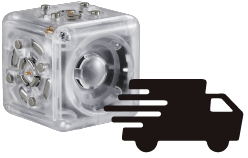
Get the details on Modular Robotics shipping policies and sales tax collection for orders in the United States and around the world.
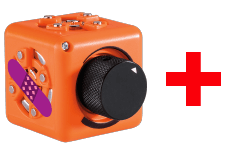
Cubelets are backed by a one year warranty. Need to make a claim, get a replacement, or have questions? Click to get started.
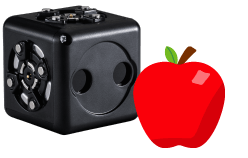
Explore a huge collection of K-12 lessons, activities, guides, training, and more.
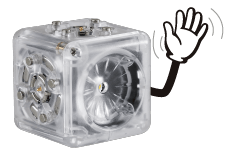
Learn everything you need to know to start creating more with Cubelets robot blocks in this handy Getting Started Guide.
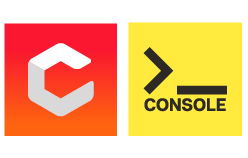
Go beyond the building blocks and play with the code inside. Cubelets apps make it easy to create even more with your Cubelets.
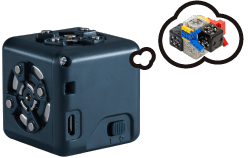
There are millions of robots you can create with Cubelets. Check out these robots to help inspire your inventions.
Cubelets robot blocks are used by educators all around the world to help students explore computational thinking, coding, and STEM.
Bring home the educational teaching tool loved by teachers everywhere. Explore sets designed for learning through play.